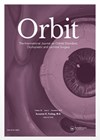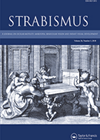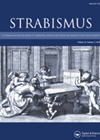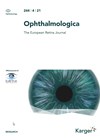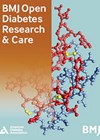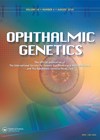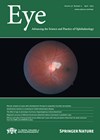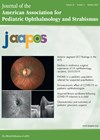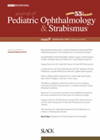Differentiating orbital cellulitis from non-specific orbital inflammation
This is a retrospective study looking at whether common laboratory investigations can help differentiate between orbital cellulitis (OC) and non-specific orbital inflammation (NSOI). NSOI is a diagnosis of exclusion following negative investigations for systemic diseases such as IgG4-related disease, granulomatosis...
Prism adaptation test in acquired non-accommodative esotropia
This study investigated factors related to the increase in prism adapted angle in patients with acquired non-accommodative comitant esotropia (ANAET) who had strabismus surgery based on the results of a short prism adaptation test (PAT) and evaluated their outcomes. Short...
Testing of binocular contrast sensitivity as an objective measure of severity in intermittent exotropia
The purpose of this study was to compare the binocular contrast sensitivity ratio (measured with the Vision CSV-100 vector chart) between 40 intermittent exotropia patients and 40 normal controls. The authors also evaluated the effect of intermittent exotropia compensation status...
Inferior oblique muscle features
The authors aimed to study and morphometrically define the surgical anatomy of the inferior oblique muscle and its variations, and to outline surgical coordinates to aid location of the inferior oblique origin and nerve supply to the inferior oblique muscle....
Acute comitant esotropia as the presenting sign of diffuse intrinsic pontine glioma
The authors present four children with acute comitant esotropia (AACE) associated with diffuse intrinsic pontine glioma. All were treated with radiation therapy and all subsequently died due to the tumour. Children were aged 5, 5, 4.5 and 11 years. General...
Smartphone use impact on accommodation and convergence measures
This study aimed to explore the relationship between smartphone use impact on the mean triad and potential pre-existent risk factors for acute acquired comitant esotropia (AACE). A prospective study of 18 university staff and students aged 24 years (SD 7.7)...
Characteristics of bilateral retinal detachment
This was a retrospective study based at a tertiary centre which analysed the specific characteristics of bilateral Rhegmatogeous detachment, taken from the review notes of 300 patients (600 eyes) who had bilateral retinal detachment (RD) surgery between January 2005 and...
A scoping review of artificial intelligence tools for diabetic retinopathy in low- and middle-income countries
The authors conducted a scoping review to summarise the literature relating to artificial intelligence (AI) tools for diabetic retinopathy (DR) in low- and middle-income countries (LMICs). Eighty-one studies were included, following a comprehensive literature search. The majority of studies were...
Driving with retinitis pigmentosa
The authors present a study of 228 consecutive patients with a clinical or genetic diagnosis of retinitis pigmentosa. Data was collected prospectively between January 2012 and October 2022 in Perth, Australia. The study aimed to determine the proportion of patients...
Diagnostic accuracy of different keratoconus detection indices of pentacam in paediatric eyes
This is a retrospective study of 432 non-keratoconic eyes compared with 48 eyes with keratoconus (KC) or forme fruste KC (FFKC) in a paediatric population in Cairo, Egypt between December 2013 and October 2018. The authors discuss the rationale of...
Using bupivacaine to the medical rectus in addition to lateral rectus recession for convergence insufficiency type intermittent exotropia
This is a retrospective study of 60 paediatric optic pathway glioma (OPG) patients (NF1 or sporadic) presenting to Great Ormond Street between 2003-2017. Median follow-up was 82 months. Analysis was divided into best and worst eye vision representing level quality...
Multidisciplinary care for VKC
The aim of this study was to develop best practice principles for diagnosis and management of vernal keratoconjunctivitis (VKC) in the UK. The authors convened a multidisciplinary panel of three paediatric ophthalmologists, two corneal specialists, a paediatric allergist and orthoptists....


